I’ve been doing some tinkering with the RN-52 Bluetooth Audio module from Roving Networks, in prep for building a portable wireless speaker system, & thought I’d share my designs.
Initially I was having some issues with RF noise on the audio output from the RN-52, as I was only using the outputs single-ended. The module didn’t like this treatment, with all the RF whine coming straight out of the speakers.
To fix this issue I have used a pair of jellybean LM386 audio power amplifiers, running in differential input mode. This solves the high-pitched whine when the audio is enabled, & also allows the module to directly drive a set of 32Ω headphones at a reasonable level.
In Eagle I have designed a simple board, routing only the audio output, serial TTL & command mode pins out, along with the supporting power supply circuitry to operate from 12v DC.
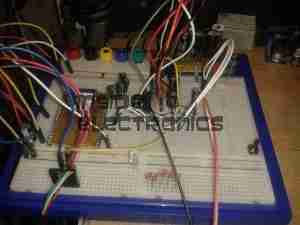
Above is the current incarnation of the circuit on the breadboard. The RN-52 is on the left, audio power stage in the centre & headphone output on the right.
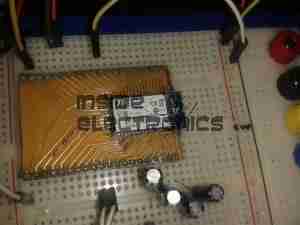
The bluetooth module on a breakout board. I was cheap in this case & etched my own board. I’m not paying Sparkfun, (as much as I like them), an extra ~£10 for a small PCB with the pins broken out. Much cheaper to spend 15 minutes with the laser printer & the iron, & do a toner transfer PCB.
As this board is single sided, I added a ground plane on the underside with copper foil, to help with the RF issues. Breadboards really aren’t all that good at rejecting noise induced when there’s a 2.4GHz transceiver mounted on them.

The LM386 audio power stage. The differential inputs from the module are capacitively coupled with 1µF electrolytics. This setup remarkably reduced the noise on the output. I left these at their default gain of 20, as I’ll be connecting another high power amplifier stage to drive large speakers.
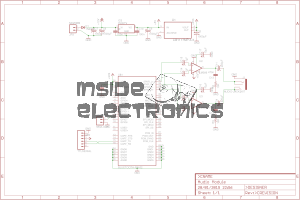
Here’s the circuit laid out in Eagle, ready for PCB.
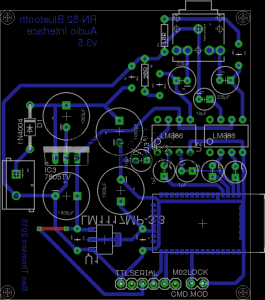
And here’s the PCB layout. Only one link required for the +5v line from the TTL serial port.
As always, the Eagle PCB & Schematic layout files are available at the bottom of the article.
*Update 29-01-15*
Rerouted a few things:
- Moved the audio power stage to the +12v rail to improve sound response. – As the LM386 has a max input voltage of 12v (absolute maximum 15v), a regulated supply is recommended. The LM386-N4 variant has a higher voltage range, up to 18v. This should be suitable for an unregulated supply.
- Removed 1µF coupling capacitors to reduce distortion & amplifier hiss. The capacitors appeared to cause some instability on the amplifier, causing random distortion. Removing them has cured this. No signal hiss has also been reduced to a very low level.
- Reversed input polarity on input of one of the amplifiers – this appears to produce better audio.
- Added PWR.EN header to allow connection of power button. Saves hassle of cycling power to the board when the RN-52 goes into sleep mode.
Improved PCB & Schematic layouts.
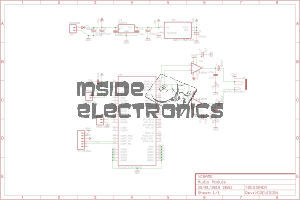
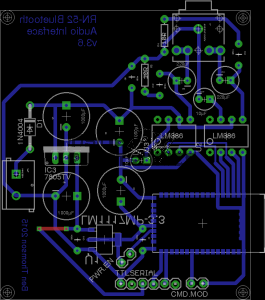
[download id=”5579″]

I tried several times to use your ” contact the engineer” page but couldn’t get past the robot check.
Hopefully you’ll get this.
A couple of questions regarding your RN-52 wireless audio design
-Why do suppose reversing the input of U3 on your schematic provided better audio?
-Did you modify the of the configuration of the RN-52? Have you ever looked at changing the internal gain settings
of the RN-52?
I’m designing something similar to what you did but I didn’t want to change the parameters of the Bluetooth module
due to not have to change anything to the device before the PCB build as we’re planning to build several 100. I’m glad to see the RN-52 is ready to use straight out of the box. Microchip definitely had the consumer in mind on the design.
Thanks
Steve Walton
sw25162@yahoo.com
Memphis, Tennessee USA
Hi Steve,
Odd with the contact page not working, it definitely was. I’ll look into that 😉
TBH I have no idea why inverting the input of the op-amp worked better, I didn’t have a proper scope handy at the time & didn’t look into things too much as I just needed a working device quickly. The RN-52 does appear to be a bit sensitive to badly laid out boards & prototyping especially.
I didn’t look into changing the gain settings on the module, the only parameter changed on the RN-52 was the Bluetooth connection settings to make it a bit more recognisable.